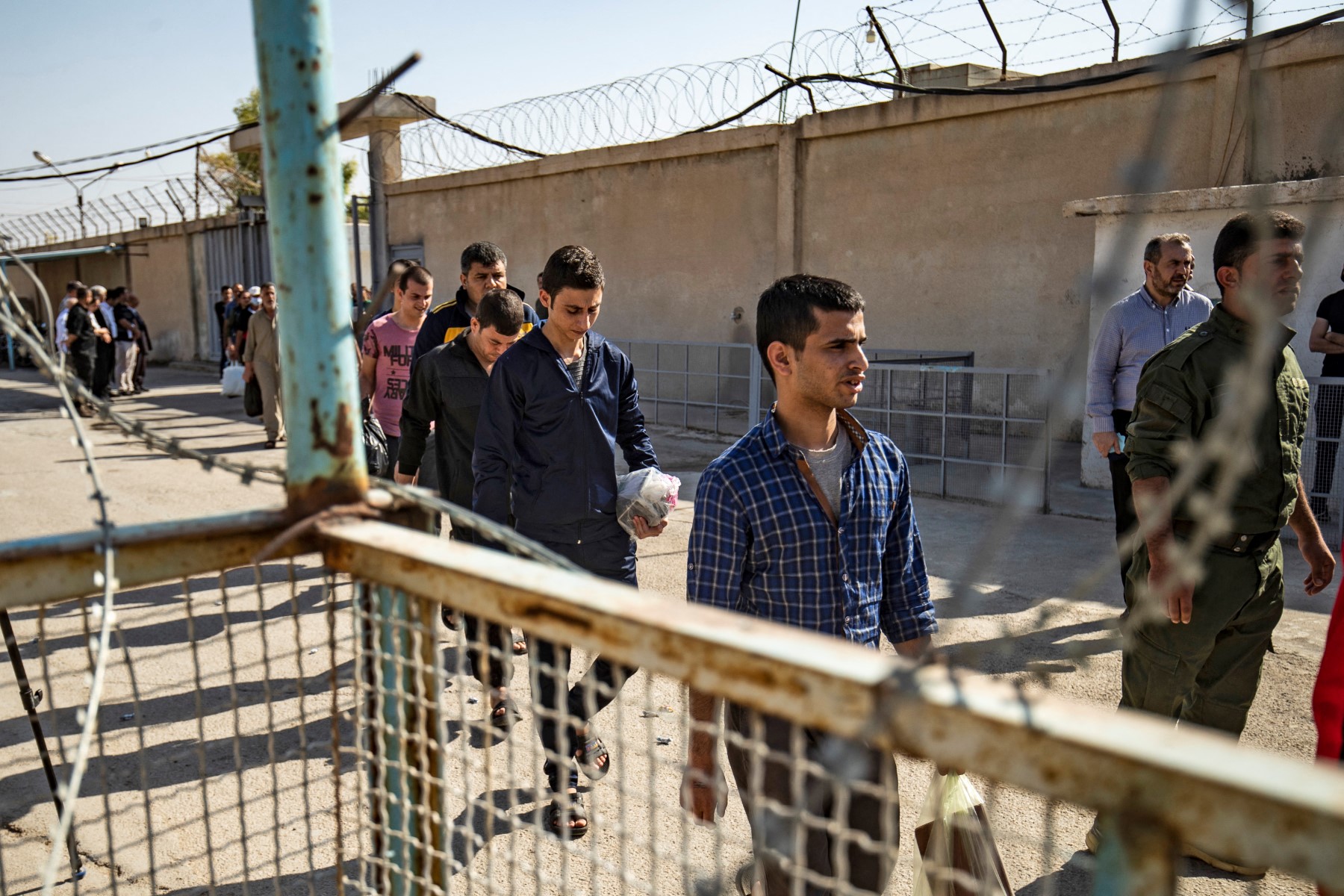Beirut, Lebanon– Syrian authorities abused and left detainees to die at a Damascus military hospital, using the facility to cover up the torture of prisoners, a rights group and former detainees said.
Sick prisoners sent from detention facilities to the capital’s Tishreen Military Hospital for treatment rarely received any medical attention, according to a report released Tuesday by the Association of Detainees and the Missing in Sednaya Prison (ADMSP), a Turkey-based watchdog.
Instead, security forces at the hospital jail and even medical and administrative staff inflicted “brutal torture” on detainees, including physical and psychological violence, according to the report titled “Buried in Silence”.
It covers abuses from the start of Syria’s civil war in 2011 to 2020, but the authors said they believe many of the practices persist today.
Abu Hamza, 43, said he was taken to the jail at the Tishreen hospital three times during his incarceration, but only saw a doctor once.
“Prisoners were afraid to go to the hospital, because many did not return,” said Abu Hamza, who was jailed for seven years, including at the notorious Sednaya prison on the Damascus outskirts.
“Those who were very sick would be left to die in the hospital lockup,” said Abu Hamza, who like others AFP spoke to used first names or pseudonyms for fear of reprisals.
“If we could walk, we’d be sent back to prison,” he added.
ADMSP was founded by former detainees held in Sednaya, Syria’s largest jail which has become a by-word for torture and the darkest abuses of the regime.
In a report last year the group described Sednaya’s “salt rooms,” primitive mortuaries designed to preserve bodies.
The latest ADMSP report is based on interviews with 32 people including former detainees, security personnel and medical staff, as well as leaked documents.
Rights groups have long accused President Bashar al-Assad’s government of torturing detainees and executing prisoners without fair trials.
In 2011, Syrian government forces cracked down on peaceful protesters, triggering a complex war that has left more than 500,000 dead and forced millions to flee.
Up to one-fifth of that toll died in government-run prisons, according to Britain-based monitoring group the Syrian Observatory for Human Rights.
Some of the horrific images of dead Syrians smuggled out by “Caesar”, a defector who had worked as a photographer for the military police, were shot inside Tishreen hospital, according to human rights groups.
Left for dead
Abu Hamza said guards at the hospital prison “once barged in and ordered us to lie on the ground”, beating them for 15 minutes before leaving.
According to the ADMSP report, inmates who died in custody from torture or poor conditions, particularly at Sednaya, were taken to the Tishreen hospital and then to “mass graves” near the capital.
Inmates arriving at the hospital were first held “in the same room where bodies of detainees were collected”, and sick detainees were forced to help transport prisoners’ corpses, the report said.
Abu Hamza said he was made to toil for hours, barefoot and in the bitter cold, loading bodies into a vehicle at Sednaya prison and then offloading them at Tishreen hospital near its jail.
There, security forces wrote a number on the corpse or on a piece of paper. A photographer would then take pictures of the dead.
The ADMSP report said no autopsies were conducted and the hospital issued “death certificates with false information”, often citing heart attack, kidney failure or stroke as the cause of death.
Sometimes inmates “between life and death” were placed among the corpses and left to die or even killed, according to the report.
Abu Hamza recalled a detainee who was “fighting for his life” in the hospital jail.
“They did not bring a doctor. Instead, they put him aside, among the corpses. They left him to die,” he said.
The report said a jail officer would sometimes kill very sick detainees, or prisoners would be ordered to take part in doing so.
Awoke ‘among corpses’
Tishreen hospital plays a “central role in enforced disappearances, covering up torture, falsifying the causes of death” and other abuses amounting to “crimes against humanity” said ADMSP co-founder Diab Serriya.
“What happens inside Tishreen hospital and other military hospitals is a systematic policy” adopted by the authorities, he added.
A Syrian doctor is currently on trial in Germany accused of torture, murder and crimes against humanity while working in military hospitals in his homeland.
Lawsuits have been filed elsewhere in Europe, as well as the United States and at the International Court of Justice, against the Syrian government and officials on accusations of torture.
Mahmud was only 16 when he was jailed in 2014 and sent to Tishreen hospital, where he said other detainees beat him severely.
“They held me to the ground, stepped on me and covered my mouth… (until) I passed out,” he said.
“I woke up a short time later and found myself among corpses in the corner of the cell,” Mahmud said, adding he was taken back to Sednaya prison without receiving any medical attention.
During the rest of his time in detention, he was too scared to visit a doctor, despite contracting tuberculosis.
“I could no longer chew food at one point, but I didn’t tell anyone so they wouldn’t take me back to Tishreen hospital,” Mahmud said.

